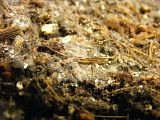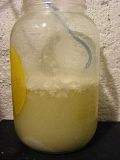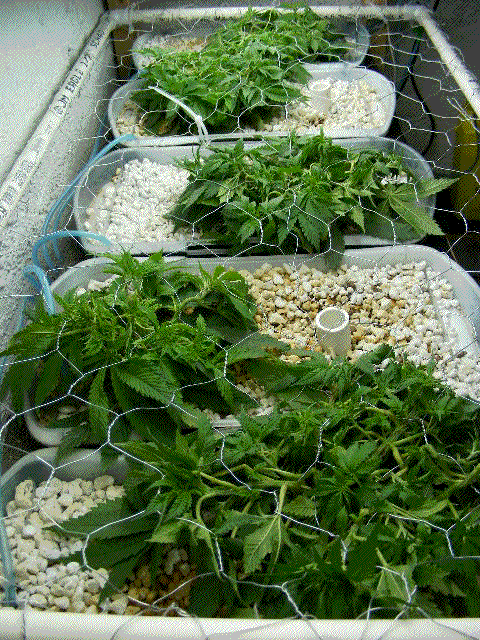Fe (Iron) has always been somewhat of an issue in nutrient formulation. There's nothing new in this and micro elements need to be chelated for this reason. Here's some info on it.. Besides this there is amino/micro proteinate Fe which is fantastic stuff along with proteinate Zn, Cu etc. But then none of this is likely relevant to organic growers as the good gear comes from science - a lab- and a bag (as does nano tech).
EDTA, DTPA, EDDHA with Fe:
Chelates like EDTA and DTPA are commonly added to fertilizers. These chelates have a high affinity for Iron and generally form stable complexes with the metal across a pH range from 4 to 7.
Chelates have several points of attachment with which they "grasp" the trace element. EDTA has four connecting points, while DTPA has five, but the higher number of connection points may not always be an advantage.
EDTA is best suited to slightly lower than neutral pH levels while DTPA is most effective at higher pH values. DTPA is more costly than EDTA and less soluble and is usually found in higher quality fertilizers.
The most effective of the synthetic chelating agents is ethylenediaminedihydroxy-phenylaceticacid (EDDHA). It is found only in select fertilization formulations because of its higher cost.
A cross range (mix) of Fe EDTA, DTPA, EDDHA or, EDTA and DTPA chelates in formulation is ideal. This will ensure nutrient availability over a wide range of conditions, including those above or below optimal.
"IF the nano iron chelate was somehow providing increased reducing power in key chloroplast processes an increase in photosynthesis might be realised."
Nice jargon.... Can we see the research? How about a link that supports what you're claiming with credible research?
EDTA, DTPA, EDDHA with Fe:
Chelates like EDTA and DTPA are commonly added to fertilizers. These chelates have a high affinity for Iron and generally form stable complexes with the metal across a pH range from 4 to 7.
Chelates have several points of attachment with which they "grasp" the trace element. EDTA has four connecting points, while DTPA has five, but the higher number of connection points may not always be an advantage.
EDTA is best suited to slightly lower than neutral pH levels while DTPA is most effective at higher pH values. DTPA is more costly than EDTA and less soluble and is usually found in higher quality fertilizers.
The most effective of the synthetic chelating agents is ethylenediaminedihydroxy-phenylaceticacid (EDDHA). It is found only in select fertilization formulations because of its higher cost.
A cross range (mix) of Fe EDTA, DTPA, EDDHA or, EDTA and DTPA chelates in formulation is ideal. This will ensure nutrient availability over a wide range of conditions, including those above or below optimal.
"IF the nano iron chelate was somehow providing increased reducing power in key chloroplast processes an increase in photosynthesis might be realised."
Nice jargon.... Can we see the research? How about a link that supports what you're claiming with credible research?







